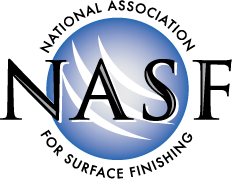April 2024 Regulatory Update

EPA Issues New Nationwide Standards for PFAS in Drinking Water
The U.S. Environmental Protection Agency announced that for the first time it has established national drinking water standards for per- and polyfluoroalkyl substances (PFAS).
NASF Government and Industry Affairs has been in discussions with EPA and the drinking water regulatory community in anticipation of the mandate as well as coordinating with a wide range of industry groups on key concerns over its potential costs and benefits.
What does the requirement do?
This final action is far-reaching and significant since the national standards will:
- Regulate the amount of PFAS chemicals in drinking water supplies across states and in thousands of local jurisdictions; and
- Set other regulatory limits for the discharge and cleanup of PFAS.
It is expected to be published formally in the Federal Register in the coming days.
What PFAS are targeted and what are the new limits?
EPA issued an allowable limit – or an enforceable maximum contaminant level (MCL) – of 4 parts per trillion (ppt) for PFOS and PFOA in drinking water, which is set at or near the detection level. In addition, EPA also set an MCL of 10 ppt for three other PFAS: HFPO-DA (Gen X), PFHxS, and PFNA, and a so-called Hazard Index (HI) of one for mixtures of four PFAS: HFPO-DA, PFBS, PFHxS, and PFNA.
Furthermore, EPA set maximum contaminant level goals (MCLGs) of zero for PFOA and PFOS, 10 ppt for PFNA, PFHxS, and HFPO-DA, and one for the HI. The MCLGs are not enforceable but function as aspirational goals for protecting human health and the environment from contaminants in drinking water.
What is the timing for implementation of the rule?
In response to concerns expressed by drinking water agencies, EPA extended the compliance period to five years. Drinking water agencies will have three years to monitor drinking water for the presence of PFAS and then have another two years to implement treatment technologies to meet the drinking water MCLs.
Costs associated with the rule are vastly underestimated.
Drinking water agencies and others have also claimed that EPA has severely underestimated the costs of the new rule and the rule will cost drinking water agencies billions of dollars to comply. Industry and consumer groups have estimated that the new rule could increase annual water bills for many Americans by $400. EPA has countered that grants and other funding are available through the Bipartisan Infrastructure Law to help offset the costs to drinking water agencies.
An array of legal challenges is expected.
Given the concerns regarding the economic and technological feasibility of meeting the drinking water standard, multiple legal challenges are expected. Members attending the 2023 NASF Washington Forum last year were briefed on the economic and legal essentials of the then-pending rule, and the Forum this fall will include a major update as well.
More NASF engagement planned immediately ahead to guide the industry.
NASF is heavily involved in emerging national discussions on the rule in Washington. The Government and industry Affairs team will continue monitoring rulemaking developments, working with stakeholders on the rule and will update NASF members in the next quarterly webinar on the specific implications for surface finishing industry going forward.
If you have any questions or would like more information on this rule, please contact jeff Hannapel or Christian Richter with NASF at jhannapel@thepolicygroup.com or crichter@thepolicygroup.com.
NASF 1000
The NASF 1000 program was established to ensure that the surface finishing industry would have resources to effectively address regulatory, legislative and legal actions impacting the industry, NASF members and their workplaces. All funds from the NASF 1000 program are used exclusively to support specific projects and initiatives that fall outside the association’s day-to-day public policy activities. The commitment to this program is one of the most vital contributions made in support of surface finishing and directly shapes the future of the industry.
The sustained commitment from industry leaders has helped the NASF remain strong and credible in informing regulatory decisions across the nation. Specific projects funded through the NASF 1000 make a measurable difference in how the industry navigates emerging challenges, communicates credibly with policy makers, and advocates for a strong science base for rules or standards that affect surface finishing.
Please consider supporting the NASF 1000 program. If you have any questions or would like additional information regarding the NASF 1000 program or the broad array of NASF public policy activities, please contact Jeff Hannapel with NASF at jhannapel@thepolicygroup.com.
 New England Chapter of NASF is an official chapter of
New England Chapter of NASF is an official chapter of